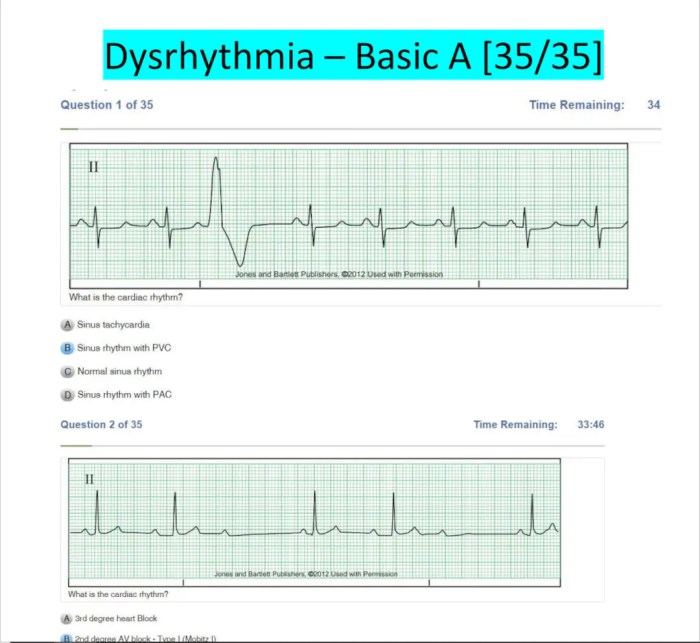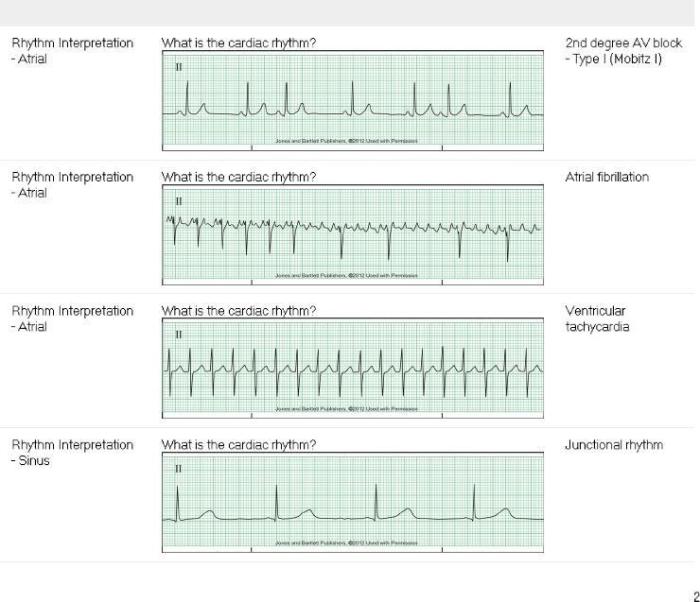The Relias Advanced Dysrhythmia Exam A is a comprehensive examination that assesses the knowledge and skills of healthcare professionals in the field of advanced dysrhythmia management. This exam is designed to validate the ability of individuals to interpret electrocardiograms (ECGs), diagnose and classify dysrhythmias, and manage patients with dysrhythmias.
This guide will provide an overview of the Relias Advanced Dysrhythmia Exam A, including its purpose, scope, target audience, prerequisites, exam format, duration, scoring system, core concepts and topics covered, preparation and study resources, exam tips and strategies, and additional considerations.
1. Relias Advanced Dysrhythmia Exam A Overview

The Relias Advanced Dysrhythmia Exam A is a comprehensive certification exam that assesses the knowledge and skills of healthcare professionals in the field of advanced dysrhythmia management. It is designed to evaluate the ability of candidates to interpret and manage complex dysrhythmias, including their underlying causes, clinical manifestations, and appropriate treatment strategies.
Target Audience and Prerequisites
The Relias Advanced Dysrhythmia Exam A is intended for nurses, paramedics, and other healthcare professionals who are involved in the care of patients with dysrhythmias. Candidates are expected to have a strong foundation in basic dysrhythmia interpretation and management, as well as experience in providing advanced cardiovascular care.
Exam Format, Duration, and Scoring System
The Relias Advanced Dysrhythmia Exam A consists of 100 multiple-choice questions. Candidates are given 120 minutes to complete the exam. The passing score is 70% or higher.
2. Exam Content and Key Concepts
The Relias Advanced Dysrhythmia Exam A covers a wide range of topics related to advanced dysrhythmia management, including:
Core Concepts and Topics
- Electrophysiology of the heart
- Classification of dysrhythmias
- Principles of electrocardiogram (ECG) interpretation
- Advanced diagnostic techniques in dysrhythmia management
- Pharmacological and non-pharmacological treatment of dysrhythmias
Types of Dysrhythmias and Their Classification
The exam covers the various types of dysrhythmias, including:
- Supraventricular dysrhythmias
- Ventricular dysrhythmias
- Conduction disorders
- Other dysrhythmias
Candidates are expected to be able to recognize and classify these dysrhythmias based on their ECG characteristics.
3. Preparation and Study Resources

To prepare for the Relias Advanced Dysrhythmia Exam A, candidates are recommended to:
Effective Study Strategies and Preparation Methods
- Review textbooks and online resources on advanced dysrhythmia management
- Complete practice exams to assess their knowledge and identify areas for improvement
- Attend continuing education courses and workshops on dysrhythmia interpretation
Relevant Study Materials
Several resources are available to assist candidates in preparing for the exam, including:
- Textbooks: “ECG Interpretation: A Comprehensive Guide” by Lippincott Williams & Wilkins
- Online courses: “Advanced Dysrhythmia Interpretation” by the American Heart Association
- Practice exams: “Relias Advanced Dysrhythmia Exam A Practice Test” by Relias Learning
Importance of Hands-on Experience and Clinical Practice
In addition to studying, candidates are encouraged to gain hands-on experience in dysrhythmia interpretation and management. This can be achieved through:
- Working in a clinical setting where dysrhythmias are commonly encountered
- Participating in simulation exercises
- Using ECG interpretation software
4. Exam Tips and Strategies

On the day of the exam, candidates are advised to:
Time Management and Efficient Test-Taking, Relias advanced dysrhythmia exam a
- Read the exam instructions carefully
- Manage their time wisely, allocating more time to difficult questions
- Skip questions that they are unsure about and return to them later
Handling Difficult or Unfamiliar Questions
- Use the process of elimination to narrow down the answer choices
- Refer to the ECG images provided in the exam
- Educated guess if necessary, but only after considering all other options
Importance of Understanding the Exam Standards and Guidelines
Candidates should thoroughly review the Relias Advanced Dysrhythmia Exam A blueprint and guidelines to ensure that they are familiar with the exam content, format, and scoring system.
5. Additional Considerations
Obtaining certification in advanced dysrhythmia management offers several benefits, including:
Benefits of Certification
- Enhanced knowledge and skills in dysrhythmia interpretation and management
- Increased confidence in providing care to patients with dysrhythmias
- Improved patient outcomes and reduced healthcare costs
Continuing Education and Professional Development
To maintain proficiency in advanced dysrhythmia management, healthcare professionals are encouraged to pursue continuing education and professional development opportunities, such as:
- Attending conferences and workshops
- Reading journals and articles
- Participating in online discussion forums
Career Opportunities and Advancement Prospects
Certification in advanced dysrhythmia management can open up new career opportunities and advancement prospects, including:
- Positions in critical care units
- Electrophysiology labs
- Cardiac rehabilitation programs
- Teaching and research
FAQs: Relias Advanced Dysrhythmia Exam A
What is the purpose of the Relias Advanced Dysrhythmia Exam A?
The Relias Advanced Dysrhythmia Exam A is designed to assess the knowledge and skills of healthcare professionals in the field of advanced dysrhythmia management.
Who is the target audience for the Relias Advanced Dysrhythmia Exam A?
The target audience for the Relias Advanced Dysrhythmia Exam A includes nurses, paramedics, physicians, and other healthcare professionals who are involved in the management of patients with dysrhythmias.
What are the prerequisites for taking the Relias Advanced Dysrhythmia Exam A?
Prerequisites for taking the Relias Advanced Dysrhythmia Exam A may include a current certification in basic life support (BLS) and advanced cardiac life support (ACLS), as well as experience in the management of patients with dysrhythmias.